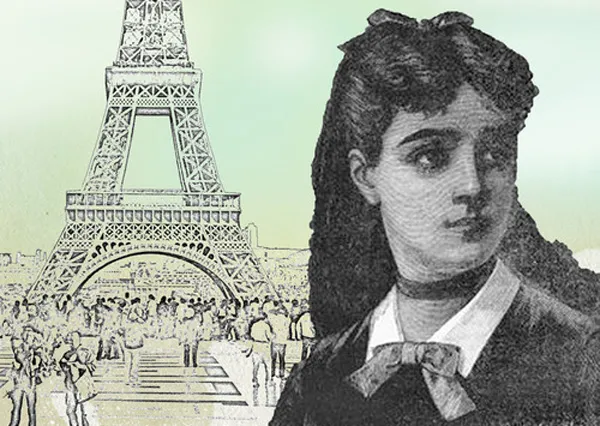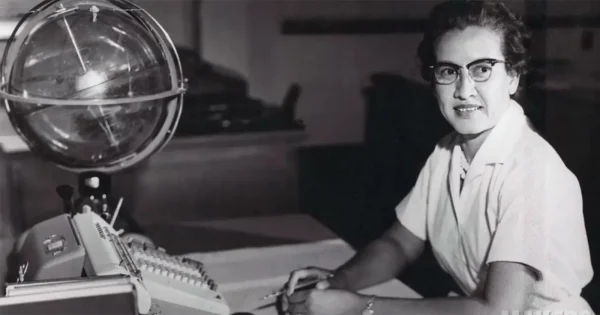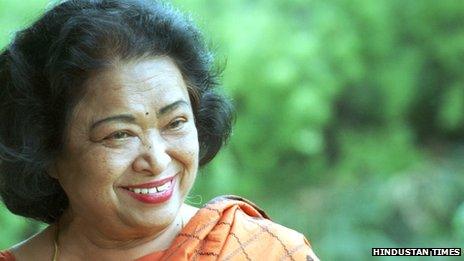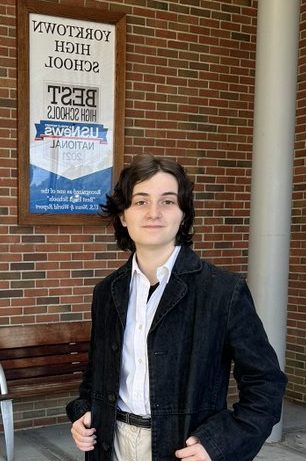On May 12, the world celebrated International Women in Mathematics Day, a tradition that began in 2019. This annual day, held on the birthday of Maryam Mirzakhani, honors the groundbreaking mathematician who became the first woman, first Muslim, and first Iranian to receive the Fields Medal in 2014 for her significant contributions to the dynamics and geometry of Riemann surfaces and their moduli spaces. In honor of Maryam Mirzakhani and other pioneering women in mathematics, let’s take a moment to recognize their contributions and explore their lasting impact on both mathematics and society.
Maryam Mirzakhani: It seems fitting to start with Maryam Mirzakhani herself. Maryam Mirzakhani, born in Tehran, Iran, was the first woman to compete on the Iranian math Olympiad team and the first to achieve a perfect score. She was also the first woman — and the first Iranian — to win the “Nobel Prize” of mathematics, the Fields Medal in 2014. This award recognized Mirzakhani’s work in the fields of geometry and dynamical systems, particularly in understanding the symmetry of curved surfaces, such as spheres, the surfaces of doughnuts and of hyperbolic objects.
After graduating from the Sharif University of Technology in Tehran, Mirzakhani moved to the United States where she earned a Ph.D. from Harvard University in 2004. By 2009, Mirzakhani had already made a name for herself among mathematicians and accepted a position as a mathematics professor at Stanford University.
By the time Mirzakhani accepted her Fields Medal in 2014, she was quite ill. Cancer had taken its toll on both her health and energy. “I am sure there will be many more women winning this kind of award in coming years,” Mirzakhani had said in 2014. Sadly, she was not there to witness the second woman to win the Fields Medal in 2022: Ukrainian Maryna Viazovska. Maryam Mirzakhani died in 2017 of breast cancer at the age of 40.
Today, Mirzakhani is a global icon for women in science. Known as one of the greatest mathematicians of her generation, several mathematics prizes have been named after her and continue to uphold her legacy: MAA’s Maryam Mirzakhani AMC 10 Award honors the top-performing young women students on the American Mathematics Competition AMC 10, so that Mirzakhani’s legacy continues to inspire the younger generation today.

Sophie Germain: Sophie Germain (April 1, 1776 – June 27, 1831) was a pioneering French mathematician who made significant contributions to acoustics, elasticity, and number theory. Self-taught in mathematics, Germain faced opposition from her parents, who were so disapproving of her studies that they denied her access to fire and candles at night. Undeterred, she continued her studies in math.
In 1795, the leading institute in STEM École Polytechnique barred women from attending, and Germain took on a male pseudonym to acquire their lecture notes. She submitted a paper to mathematician J.L. Lagrange under this pseudonym. Recognizing the talent in the work, Lagrange sought out the author and was astonished to discover it was a woman.
Germain’s focus later shifted from number theory to applied mathematics after witnessing E.F.F. Chladni’s demonstration of sand patterns on vibrating glass plates, which visually represented two-dimensional harmonic motion. The phenomenon sparked great interest, leading Napoleon to offer a prize for the best mathematical explanation. Despite flaws in her initial submissions, Germain’s innovative approach, free from the constraints of prevailing molecular theories, ultimately won her the prize in 1816 on her third attempt.
Although winning the prize brought her some recognition, Germain remained marginalized by the scientific community due to her gender. She was “always on the outside, like a foreigner, at a distance from the professional scientific culture.” Nonetheless, her intellectual achievements serve as an inspiration for future generations of women who pursue mathematics for its inherent joy and challenge.

Katherine Johnson: Katherine Johnson was a trailblazing NASA mathematician who played a pivotal role in the Space Race, including calculating the trajectory for the Apollo 11 mission to the moon and back. As a Black woman working at NASA in the 1950s and ’60s, Johnson broke through social barriers and racial discrimination, becoming a symbol of excellence and perseverance in mathematics.
Johnson’s early life was marked by determination and resilience. Her hometown lacked public schooling for Black children beyond eighth grade, prompting her family to move 120 miles so she could attend high school. Johnson graduated high school at 14 and college at 18, earning degrees in mathematics and French from the historically Black West Virginia State College.
Recognizing her potential, her professor William Schieffelin Claytor encouraged her to become a research mathematician, even creating a geometry class specifically for her. After a few years of teaching, Johnson was accepted into West Virginia University’s graduate math program in 1939, becoming the first Black woman to attend the school.
Johnson later joined the National Advisory Committee for Aeronautics (NACA), NASA’s predecessor, as a “computer” at the Langley Research Center, where she performed and verified calculations for flight tests. Her expertise was crucial for NASA’s 1961 Mercury mission, where she calculated the parabolic trajectory needed for the capsule’s safe return. “You tell me when you want it and where you want it to land, and I’ll do it backwards and tell you when to take off,” she famously said.
Johnson’s calculations were vital for Alan Shepard’s flight, making him the first American in space, and for John Glenn’s Friendship 7 mission, where Glenn insisted Johnson personally verify the computer’s calculations before his flight. Her contributions were also instrumental in syncing the Apollo 11 lunar lander with the command and service module to ensure the astronauts’ safe return to Earth. During the Apollo 13 mission, her backup procedures were crucial in bringing the crew home safely after a malfunction. Her remarkable career was spotlighted in the 2016 book and movie “Hidden Figures.”
In recognition of her achievements, President Barack Obama awarded Johnson the Presidential Medal of Freedom in 2015. In 2016, NASA honored her legacy by naming the Katherine G. Johnson Computational Research Facility at the Langley Research Center after her. Johnson’s story continues to inspire future generations, celebrating her as a pioneering woman of color in mathematics.

Shakuntala Devi: Shakuntala Devi was born on November 4, 1929, in Bangalore, Karnataka and is known as the “Human Computer.” Her extraordinary talent in mental arithmetic dazzled audiences worldwide from a very young age, and she had an unparalleled skill in calculating complex numbers without any aid.
Shakuntala Devi’s remarkable talent earned her a place in the Guinness Book of World Records. On June 18, 1980, at Imperial College London, she astounded the world by correctly multiplying two randomly chosen 13-digit numbers, 7,686,369,774,870 and 2,465,099,745,779, in just 28 seconds. She calculated the answer, 18,947,668,177,995,426,462,773,730, entirely in her head, surpassing the capabilities of the most advanced computers of her time.
Shakuntala Devi was also an accomplished author, writing books on mathematics, puzzles, and astrology. Her works reflected her deep understanding and love for numbers, and she used her platform to inspire others, particularly in the field of mathematics. What makes Shakuntala Devi’s achievements even more remarkable is that she accomplished all of this without any formal higher education in mathematics. Her innate ability and passion for numbers allowed her to excel and break barriers, demonstrating that the human brain possesses capabilities far beyond those of computers.
Shakuntala Devi’s life and achievements continue to inspire mathematicians and non-mathematicians alike, making her an essential figure to remember and honor on International Women in Mathematics Day.

On International Women in Mathematics Day, we continue to honor the extraordinary achievements of women, whose contributions have significantly advanced the field of mathematics. Their stories of perseverance, innovation, and brilliance continue to inspire future generations of young girls, reminding us of the impact women have in shaping the world of mathematics and beyond.







